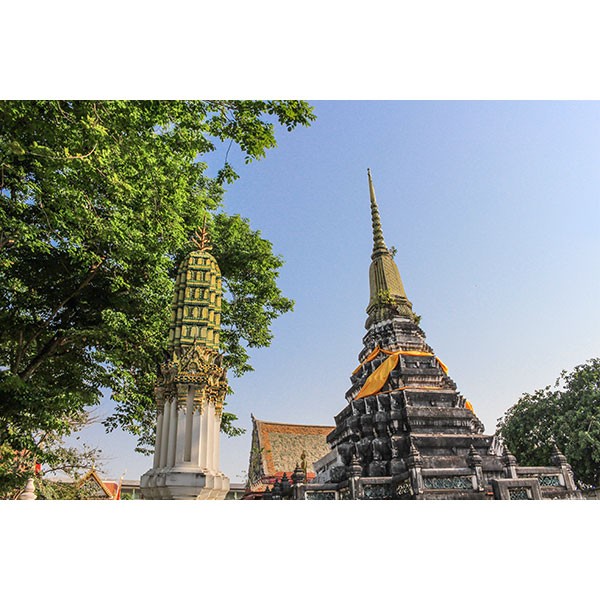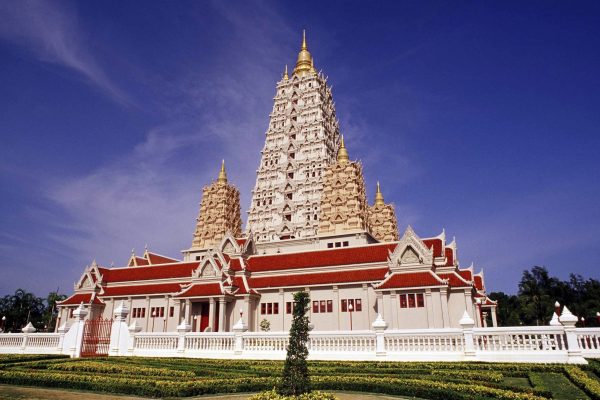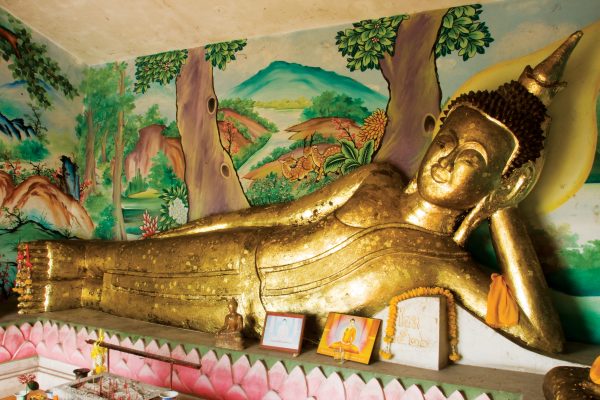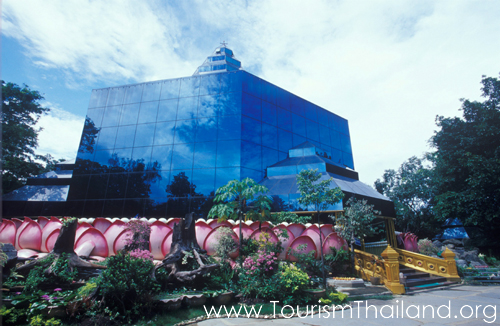
Wat Chotikaram
Wat Chotikaram, originally called “Wat Sam Chin”, was built in 1807. The door and window facades at the ubosot were embellished with stucco design, with decorative blue-and-white ware and Benjarong (traditional Thai five-colored ceremics). The door panel of Vihara was splendidly engraved in the Chinese door-keeper picture. The historical sites in the temple is the 3-room brick Vihara in ‘Song Rong’ (an architectural style, which is a type of the monastery building surrounded by opaque walls and a few windows.). Inside enshrined a principle Buddha image on the pedestal. Mural paintings are seen on floors, and ceilings, mostly about sections in Buddha life; his confrontation with the Mara, Sattamahasatarn (7 places the Buddha drank deep in his Vimuttisuk or great inner happiness after the enlightenment), the Buddha’s visit to his former mother at Daodeung heaven (the 2nd heaven out of 6 Deva celestial sphere). Moreover, Wat Chotikaram also has a pulpit from Ayutthaya period as well. Ajarn N. Na Pak Nam observed the patterns, and regarded it as the early Ayutthaya antique. Scholars claimed that it was the most ancient pulpit in this area.The ubosot is a brick building, with height to the ridgepoles, but no any Chofa (gable), or Bairaka (toothlike ridges on the edge of gable). The front has Palai (or a veranda). At the triangle end of the roof was intricately engraved works with Puritat Jataka (the 6th life out of the Buddha 10 incarnations) design amid stucco patterns in flowering and ornamental plant pictures. The facade ‘Jaranam’ was also adorned with porcelains. These decorations were assumed to be ‘Phra Rajaniyom’ style, an popular art existing in the reign of King Rama III.The chedi, located between the ubosot, and phra Vihara is a 20 indented cornered chedi. Up above the chedi body, it was ornamented with yellow porcelains. The top has layers of receding lotus mouldings. The shape of the stupa bares the splendid resemblance to Chedi built in King Rama IV period at Wat Po, Tha Tien pier.The vihara is surrounded by walls called ‘Kam Paeng Kaew’. There are little prangs (or Khmer-style cornshaped stupas) at the 4 corners of Kam Paeng Kaew. These prangs were embellished with yellow porcelains like the chedi. This vihara has reinforced concrete front and back balconies. The front door panel was carved in Chinese door-keeper patterns, the same as the patterns in Wat Nang Chee. The back door and window panels were etched in tall vase designs, looking alike Chinese oblation. The mural paintings on the front wall of the principle Buddha image was about Mara Pajon or the confrontation of the Buddha with the Mara, as seen in the general mural tradition in ubosot in early Rattanakosin period. Ajarn N. Na Paknam therefore presumed that this vihara must have been the ubosot before. Above such Mara mural paintings were Thep-Choom-Noom designs. The upper most murals were the paintings of the previous Buddhas, a popular mural tradition in King Rama IV reign.




